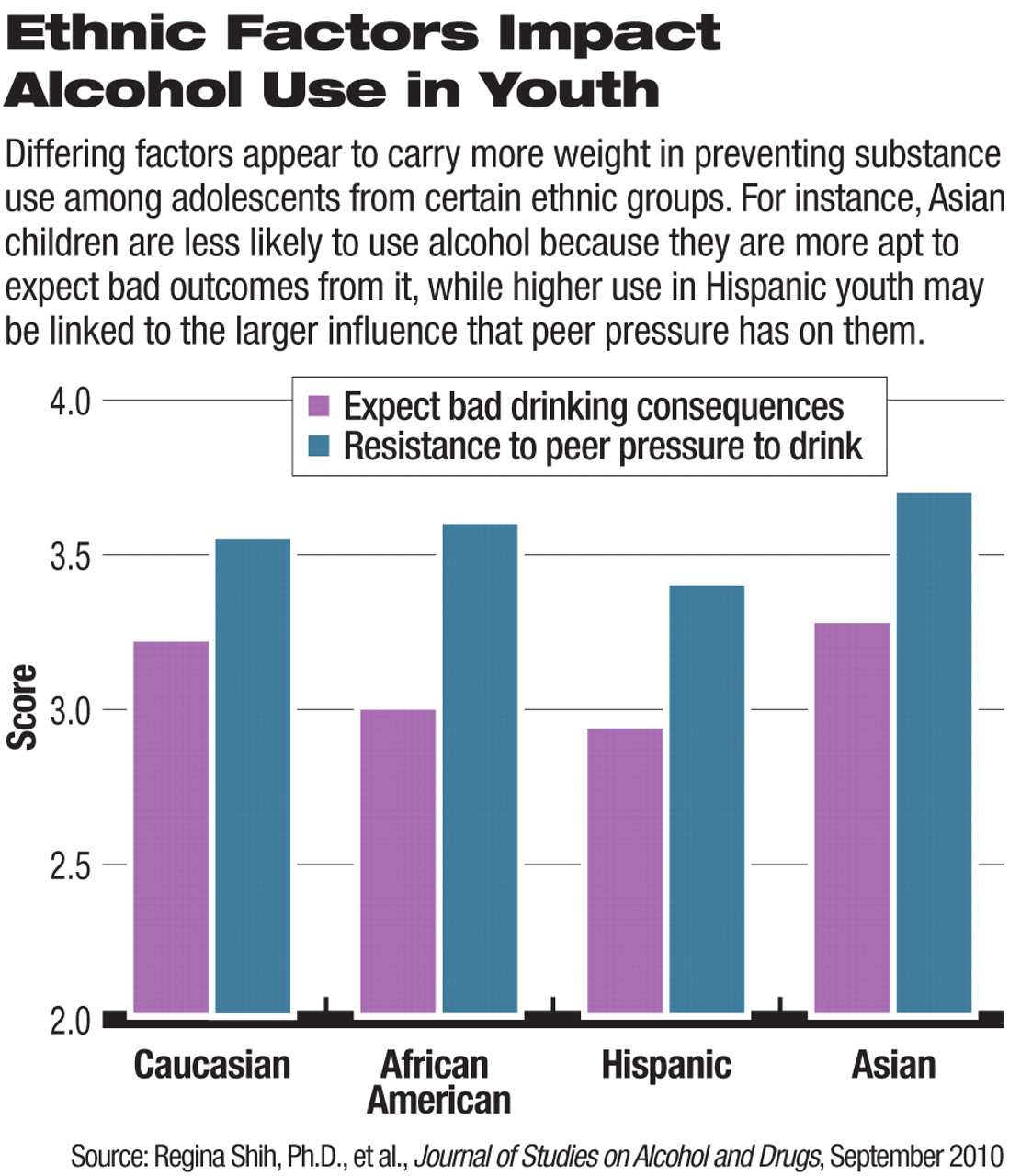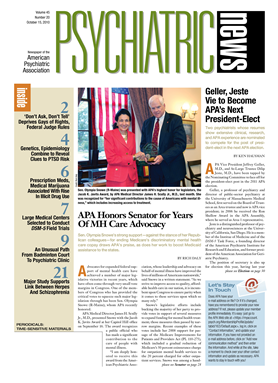Newly identified links between adolescent substance use and factors in their ethnic backgrounds may provide valuable tools that if incorporated into prevention programs could help youngsters avoid substance abuse problems.
Previous research has identified significant racial and ethnic differences in adolescents' use of cigarettes, alcohol, and marijuana. A new study examined whether specific outside factors were more likely to influence substance use problems for youth from certain ethnic backgrounds.
As it turns out, not only are adolescents from some ethnic groups more likely to use certain substances, but that use may be mitigated by environmental influences from family members, schools, and the teens' individual outlooks, according to a study funded by the Rand Corporation and published in the September Journal of Studies on Alcohol and Drugs.
Regina Shih, Ph.D., an associate behavioral and social scientist at Rand, and her colleagues surveyed an ethnically diverse group of about 5,500 seventh and eighth graders in 16 Southern California middle schools about their alcohol, tobacco, and marijuana use and evaluated the extent to which individual, family, and school factors affected the various racial and ethnic differences in use of the substances. Researchers obtained parental consent for the students who were included in the survey. Spanish-speaking staff were available at each survey administration, and survey booklets were available in Spanish and Korean.
Overall, the survey respondents had rates of lifetime and past-month substance use that were comparable to those found by previous national surveys. For example, 29.2 percent of eighth graders surveyed reported alcohol use at some point in their lives, compared with the 28.8 percent lifetime alcohol use found among eighth graders nationally by the 2007 National Survey on Drug Use and Health administered by the Substance Abuse and Mental Health Services Administration.
The study found that after adjusting for gender, grade, and family structure, however, Hispanics reported higher and Asians reported lower lifetime and past-month use of the three substances about which the researchers asked, compared with non-Hispanic Caucasians. Rates of substance use did not differ between non-Hispanic African Americans and Caucasians.
Specific factors were associated with lower likelihood of substance use among different ethnic groups of adolescents, including Hispanic youth's lower reported ability to resist peer pressure and less fear that substance use is accompanied by unwanted consequences. In contrast, substance use by Hispanic youth was much less affected by family or school factors than was the case among other ethnic groups surveyed.
A different array of factors affected substance use by Asian children. They were much less likely to use alcohol if they had certain perspectives that the researchers asked about. For example, if they confirmed that they had strong respect for their parents and if they did not witness heavy alcohol use by parents or any alcohol use by older siblings, then the respondents were less likely to use alcohol.
Asian survey respondents' perceptions that their peers and others at their school drank alcohol correlated with a higher likelihood that they would drink.
The ethnic-group-specific findings could help improve the efficacy of substance abuse prevention programs, the authors suggested. For instance, “interventions that aim to provide a more realistic estimation of perceived peer use may be particularly salient to reduce substance use in younger Asian adolescents,” Shih and her colleagues said in their report.
Sandra Walker, M.D., chair of APA's Council on Minority Mental Health and Health Disparities, agreed that the findings could help to better inform clinicians about ways to approach young patients from differing ethnic backgrounds.
“From the perspective of clinical usefulness, I think that it is worthy to try to identify motivational factors that may deter substance abuse in youth prior to their establishing patterns of substance use,” Walker told Psychiatric News. “This study does seem to suggest that different educational approaches might be emphasized, depending on the group one targets.”
Ray Hsiao, M.D., codirector of the Adolescent Substance Abuse Program at Seattle Children's Hospital, noted that the new study is consistent with previous ethnic-specific findings in adults and is a good addition to the limited literature on adolescents.
“It may be helpful for the general clinician who works with various ethnic populations to understand the difference in prevalence and need for screening,” Hsiao told Psychiatric News.
The new research is “important,” said Elinore McCance-Katz, M.D., Ph.D., because it includes a large sample size and focuses on the initial substances that young people begin using. She is a professor of psychiatry at the University of California, San Francisco, and state medical director of the California Department of Alcohol and Drug Programs.
“What I took from this article was that there are specific, modifiable factors—for example, resistance, self-efficacy, and positive and negative expectancies—that appear to be related to substance use,” McCance-Katz told Psychiatric News.
The findings can help clinicians and the developers of prevention interventions to understand what mediates substance use and help identify more effective interventions “with a focus on specific factors that might contribute to individual risk of substance use,” she noted.
However, the usefulness of the research, Walker noted, may be limited by the disparate size of the ethnic groups it included, which varied from more than 3,000 Hispanic youth to only about 200 African-American youth.
The authors of the study acknowledged that the racial makeup of their respondents was limited by the specific demographics of Southern California and “is not necessarily generalizable to the larger population of middle-school adolescents in the United States.”
Despite those limitations, Shih and her colleagues maintained that their study is “an important first step” in estimating ethnic differences in substance use among adolescents and identifying what individual, family, and school factors contribute to ethnic differences in alcohol and drug use among that age group. Such information may add to the few existing alcohol and drug prevention and intervention programs that appeal to the strengths of the young students' specific ethnic cultures.
“These findings may inform public-health intervention efforts that aim to reduce consumption during the period of greatest risk for substance-use initiation and escalation,” Shih and colleagues noted, referring to the middle-school age group.

